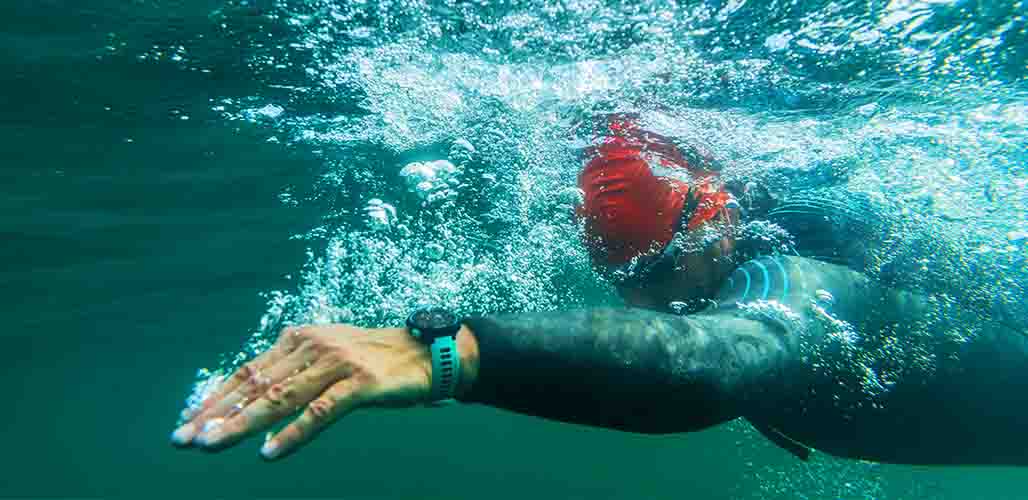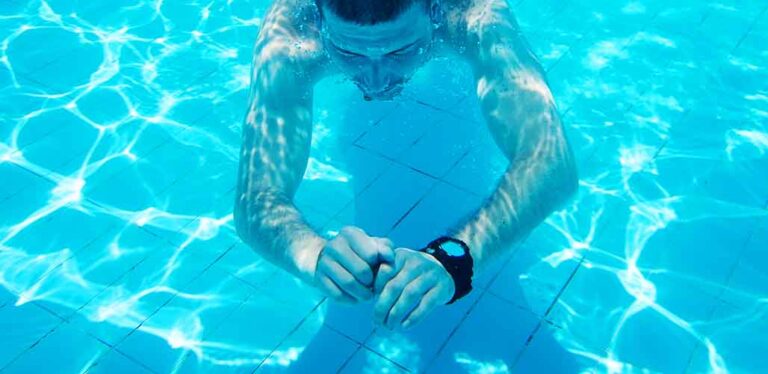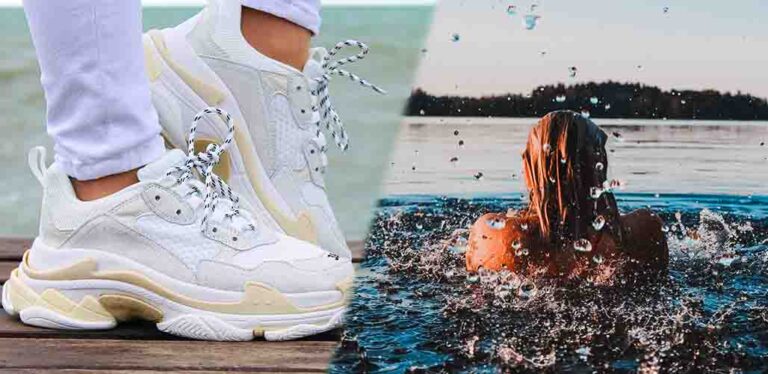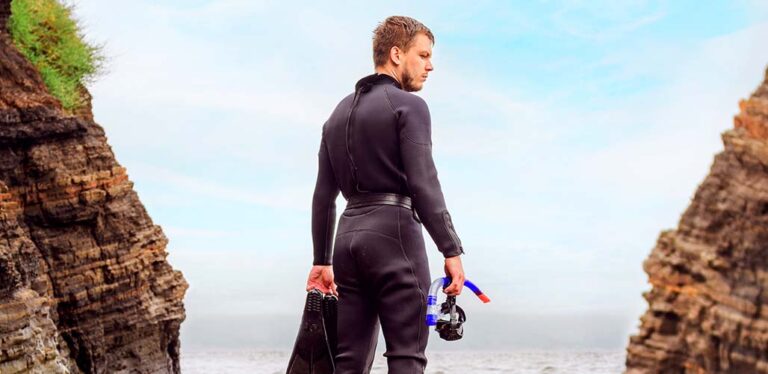Can A Full Wet Suit Be Used For Swimming?
When my daughter recently asked me ‘can a full wetsuit be used for swimming?’ I assumed she meant for her swimming lessons at the local indoor pool. I was both confused about why she would want to attempt them in a full wetsuit, and also stumped for any good reason why she shouldn’t! So I got stuck into some research, and found out that you can use a full wetsuit for swimming, but there are some notable features to look out for or avoid. And now I’m going to share them with you!
Contents
- Can a full wetsuit be used for swimming?
- What kind of wetsuit do I need for swimming?
- What is the difference between a swimming wetsuit and a surfing wetsuit?
- Can a full wetsuit be used for swimming in an indoor pool?
- How thick should a wetsuit be for swimming?
- What do you wear under a full wetsuit?
Can a full wetsuit be used for swimming?
Some swimmers prefer the idea of swimming in a full wetsuit for
- warmth
- protection in rivers or lakes which might have underwater obstacles
- modesty reasons
- or because they appreciate the extra buoyancy a wetsuit gives.
Wetsuits come in several different types, such as scuba diving, surfing, and yes, swimming suits. Each type has design features which make it ideally suited for its own purpose. And if you want to wear a full wetsuit for swimming, you’ll have a happier experience if you choose one with features which make it comfortable and practical for swimming in.
What kind of wetsuit do I need for swimming?
For recreational swimming in unheated outdoor pools, lakes, rivers or the sea, the most suitable full wetsuit is a swimming wetsuit. Swimming wetsuits are made out of neoprene, like surfing wetsuits. Therefore the main appeal of choosing a full swimming wetsuit is that it will give you warmth and buoyancy in cold water with a current. If the water is already warm enough, and buoyancy isn’t a problem, then you may be happier with a swimskin or a modest swimsuit instead.
Swimskins are thicker than regular swimsuits and provide more coverage, but they are made out of fabric lighter and thinner than neoprene. Modest swimsuits are made of regular swimsuit material, but cover all or part of the arms and legs. So you get the benefit of coverage, but without the bulk of wearing neoprene – and usually at a lower price, too.
What is the difference between a swimming wetsuit and a surfing wetsuit?
The main difference between swimming and surfing wetsuits is that swimming wetsuits are designed with maximum range of movement and creating minimal drag in mind, whereas surfing wetsuits sacrifice some of that in exchange for increased durability.
For example, a swim wetsuit may boast features such as:
- Lightweight materials, so that you’re not being exhausted by carrying the weight of the suit with you.
- Greater elasticity to improve ease and range of movement.
- A smooth external coating to improve how easily you glide through the water.
- Carefully positioned and constructed seams, to minimize chafing.
Surf wetsuits swap some of these features for:
- Durable materials which are less easily torn or damaged.
- Wind resistant materials to keep you warm when you’re out of the water.
- Rubber knee pads.
Obviously it is still possible to swim in a surf wetsuit, but it’s less comfortable, slower, and more tiring over long distances.
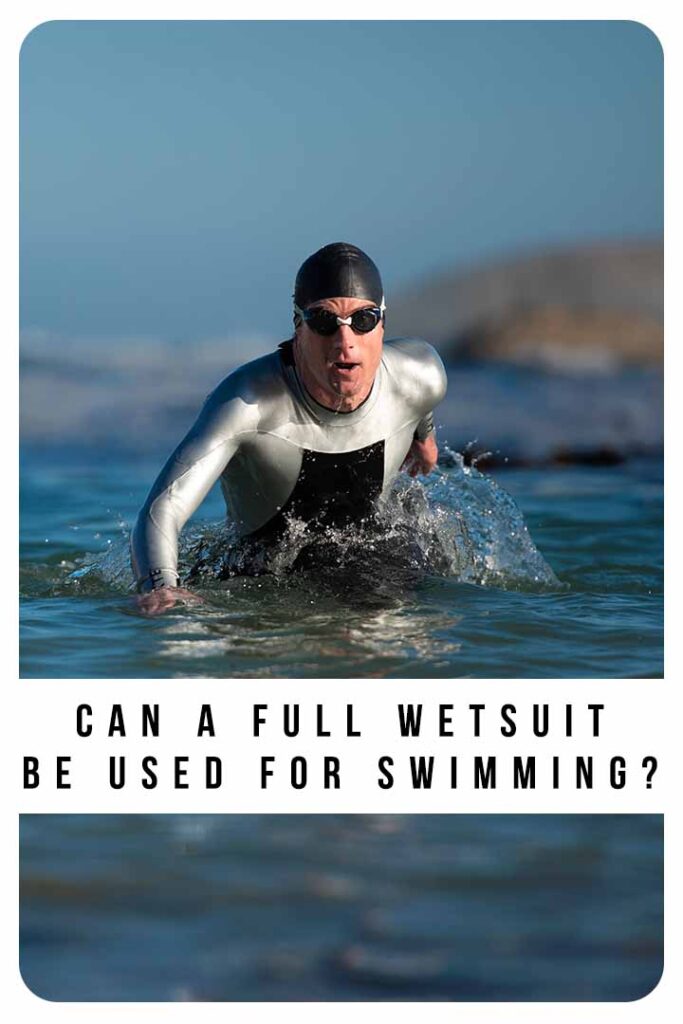
Can a full wetsuit be used for swimming in a pool?
There’s no reason you can’t wear a full wetsuit to swim in a pool. If you’re training for a triathlon and you can’t always swim in open water, then wearing your wetsuit while you train in a pool is a good way to get used to how it feels. And a good opportunity to practice taking it off quickly too!
However, bear in mind that wetsuits are designed to keep you warm in open water, and you could get too hot wearing one in a heated pool. Make sure you have a bottle of water nearby, and take regular breaks.
How thick should a wetsuit be for swimming?
Wetsuit thickness is usually described with two numbers, for example 6/4mm, or 3/2mm. The first number is the thickness of the neoprene on the torso – it is thicker to help keep your core body temperature warm. The second number is the thickness of the neoprene on the arms and legs – they are thinner to allow easier range of movement.
Swim wetsuits can be as thick as 5/4mm, or as thin as 2/1.5mm. Thicker wetsuits are warmer, and also more buoyant, helping you stay afloat. Thinner wetsuits are less insulating and less buoyant, but also lighter and easier to move in. To get the best of both worlds, some of the most sophisticated swimming wetsuits have panels in multiple different thicknesses.
The right thickness for you depends upon:
- The water temperature where your swim.
- How much you feel the cold.
- Your swimming style.
Some manufacturers distinguish between swimming wetsuits for breaststroke and swimming wetsuits for other strokes, since breaststroke swimmers usually prefer their legs to be less buoyant.
Can you swim in a 5mm wetsuit?
You can, and if you swim in very cold water or you feel the cold easily, then a wetsuit with some (or several) 5mm panels might be best for you. Bear in mind that other features – like whether the suit was designed for swimming, surfing or diving, will also affect how comfortable the suit is to swim in. And in summer or heated pools, it’s probably going to be too hot.
What do you wear under a full wetsuit?
What you wear under a full wetsuit for swimming comes down to choice – there are several options. The most popular option is a swimsuit or bikini for women, and a speedo or cycle shorts for men. You can opt for a short sleeve or long sleeve rash vest though if you prefer. These are popular base layers for swimmers who suffer chafing or irritation from wetsuit seams. If the temperature of the water where you swim changes seasonally, then adding and removing base layers is an economical way to make one wetsuit work all year round too.
Can a full wetsuit be used for swimming – summary
A full wetsuit can be used for swimming. It’s a popular choice for swimmers in cold open water, because it provides warmth and protection from objects in the water. Swimming in a full wetsuit is easier if you can get one designed for swimming in. Swim wetsuits are designed to move frictionlessly through the water, and give the wearer full range of movement with minimal resistance. If wearing a full wetsuit to swim in feels over the top, a swimskin or modest swimsuits might feel better.
Do you swim in a wetsuit?
If you swim in a wetsuit we’d love to know more. Is it a requirement for your activity, or personal preference? Do you have a wetsuit brand you swear by? Let us know in the comments box down below!

